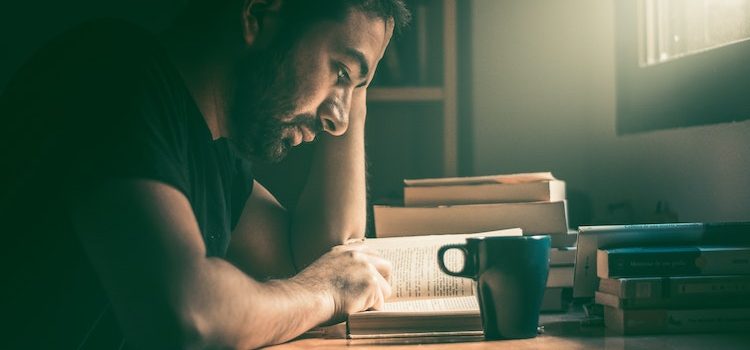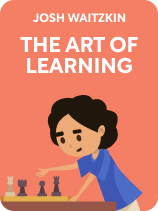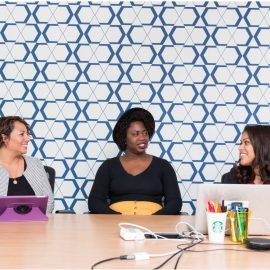

This article is an excerpt from the Shortform book guide to "The Art of Learning" by Josh Waitzkin. Shortform has the world's best summaries and analyses of books you should be reading.
Like this article? Sign up for a free trial here .
Is trial and error a good way to learn? Do you take time to reflect and extract lessons from your mistakes?
Error is inherent in learning. Mistakes reveal the flaws in our skills and show us where to grow. The key to learning through trial and error is to focus on the process, not the results. If you fixate on results, you’ll get derailed by mistakes, not learn from them.
Here’s why growth comes from trial and error.
Growth Comes From Trial and Error
Learning happens through trial and error. You take one step at a time, sometimes succeeding, but often slipping up. When you make a mistake, you have an opportunity to grow.
For example, imagine you try to play a chord on a guitar. It doesn’t sound quite right, so you adjust your fingers and try again. Each time you do it incorrectly, the feedback tells you how to correct your form. Eventually, you’ll find the correct finger placement.
(Shortform note: In Black Box Thinking, Matthew Syed argues that error is inherent in learning. As Syed shows, incremental growth is profoundly powerful: It’s the mechanism that drives both evolution and the scientific method. He argues that organisms and ecosystems evolve by undergoing continuous stress tests (storms, drought, predation, and so on) that select for the fittest creatures. Scientists also follow this method, positing theories, testing them, and adjusting them based on feedback. So while “learn from your mistakes” might sound like a platitude, it’s profoundly useful.)
Each time you perform this trial and error cycle—act, err, adjust, repeat—you make an incremental improvement. In Waitzkin’s view, to learn is to build increment on increment on increment. Each addition builds your knowledge—in other words, the peak of success lies atop a mountain of mistakes.
Learning through trial and error requires presence, which helps you grow through failure with patience, focus, and resilience. Presence helps you accept and act from the here and now. When you meet obstacles, a calm, focused state of being helps you face them head-on, accept internal and external turbulence, recover from falls, and stay oriented to your growth process.
| How to Learn From Your Mistakes In Black Box Thinking, Syed gives a step-by-step process for how to learn from errors. The key is to set up a tight feedback loop between the steps you take and the lessons you learn: 1. Take action using your current knowledge. Start practicing that habit you’ve been thinking about (for example, beginning a 30-minute morning cardio session). 2. Observe how things go and gather data. You might keep a simple log in which to reflect daily on how you feel after your workout. 3. Note any mistakes and analyze what went wrong. Maybe you missed a day, and you notice it was because you were tired from staying up too late. 4. Use that data to make a simple, actionable change. Incorporate the feedback into your next action. In the above situation, you might adjust by turning your phone off at 9 p.m. to avoid late-night use. Each time you perform this cycle, you learn about what works and what doesn’t, and can adjust your efforts accordingly. The following are examples of this method applied to various skills: – Language learning: Practice pronouncing a foreign word until you’ve got it just right, adjusting your pronunciation according to each mistake. – Snowboarding: Practice balancing on flat ground, adjusting your stance until you can stay steady and calm. – Writing: Practice articulating ideas one phrase at a time, adjusting your phrasing and word usage until you’ve got it just right. Or, get feedback by sharing your writing and adjust according to what works and what doesn’t. |
Focus On the Process
To improve through trial and error, you need to have a growth mindset. Waitzkin explores Carol Dweck’s research on “incremental” versus “entity” theories of intelligence. In Mindset (Dweck’s book on the topic) she refers to these as “growth” and “fixed” mindsets. Here, we’ll examine Waitzkin’s interpretation of the two mindsets as they relate to skill building and competition.
With a growth mindset, you believe that you can develop your abilities through patient practice, building increment upon increment, and you see challenges as opportunities to stretch your current capacities.
(Shortform note: Angela Duckworth’s notion of Grit is closely related to a growth mindset. Duckworth argues that grit—a personality trait combining hard work, resilience, and perseverance—predicts success better than talent or luck, because those who drop out when the going gets tough won’t make it to the top even if they’re naturally talented. It’s worth noting that in addition to advocating for a growth mindset, Waitzkin himself possessed natural talent as a 6-year–old chess prodigy and skilled meta-learner. So while effort matters, innate ability still plays a role in success.)
Waitzkin argues that a growth mindset corresponds to focusing on the process. It’s about the overarching experience of learning, not any single point throughout it. Short-term goals test your progress, but they aren’t the ultimate point.
(Shortform note: In Grit, Angela Duckworth offers six steps for navigating the growth process that are similar to Matthew Syed’s steps. In short, Duckworth instructs us to: 1) Set a stretch goal—something just beyond your current abilities. 2) Work toward that goal with deep focus, practicing daily. 3) Gather feedback, focusing on what you did wrong rather than what you did right. 4) Reflect on the feedback and adjust your efforts accordingly. 5) Continue to work toward your stretch goal. Once you reach that goal, step 6) is to set a new one, continuing the process of growth. The fact that Duckworth’s and Syed’s methods overlap so closely speaks to the efficacy of a trial-and-error growth process, which Waitzkin also recommends.)
In contrast, people with a fixed mindset believe that ability is inherent and set in stone. Waitzkin warns that a fixed mindset is dangerous because it doesn’t prepare you for obstacles. Instead, people with fixed mindsets tend to give up when confronted with challenges that surpass their current abilities.
For example, a teenage football player with a fixed mindset will start to crack when he reaches the limits of his natural talent. When he can no longer win by talent alone, he’ll fall behind those who learn from their weaknesses.
A fixed mindset focuses on outcomes over process, Waitzkin says. So competitors with a fixed mindset worry about whether or not they’ll succeed, rather than focusing on what they can learn. When you inevitably face adversity, a fixed mindset gives you nothing to fall back on—your whole identity is built around winning, so you’ll collapse emotionally when you lose. This hampers growth, because growth comes from struggling at your limits.
(Shortform note: Fixed mindsets aren’t necessarily fixed. In fact, one argument suggests that you can choose your mindset based on the given situation. Furthermore, in some instances, a fixed mindset is preferable. For example, assuming a fixed mindset is effective when you need to quickly complete a task, especially if it’s for the benefit of a group in a collaborative situation. In other cases, such as when you’re working on a solo project, you can switch to a growth mindset and focus on developing and improving your own skills.)
Commit to Long-Term Effort
Because fixating on results makes you fragile, Waitzkin argues, winning is ultimately a weak incentive. It isn’t a reliable motivation, because you’ll inevitably lose at some point—becoming excellent requires it.
Waitzkin gives the example of a young chess player who was the best at his school. But at a chess conference, this boy refused to play against Waitzkin or anyone that he knew was better than him. According to Dweck’s mindset theory, this preserves the identity he’d built around being the local best by avoiding failure—and it exemplifies the fragility of fixating on results.
(Shortform note: A 2017 study of elite golfers on the PGA tour found that nonmonetary incentives—namely, glory—correlate with poorer performance. The study followed top US golfers as they competed to earn a spot on the US Ryder Cup team, and it found that this high-stakes environment placed substantial pressure on the golfers, causing them to choke in critical moments. Though this research is still young, it supports Waitzkin’s assertion that worrying too much about results is a fragile motivation.)
Rather than focusing on a desired outcome, Waitzkin recommends committing to the process of growth—to daily practice, focused patience, and adaptation in the face of obstacles. According to Waitzkin, this approach keeps you resilient, because you embrace failure as part of the journey instead of fearing it.
For example, he details how he lost repeatedly against the chess hustlers who set up in NYC parks, but took every loss as a learning experience. As the losses, thus lessons, accumulated, he improved his skills.
(Shortform note: It’s worth noting that you don’t need to immediately learn from your failure, and it’s okay to feel strong emotions after a heartbreaking loss. Waitzkin acknowledges this by detailing how after losing an important youth tournament, he needed a few weeks away from the game to clear his mind and reset. You also don’t need to be a growth robot: Leaning on family and friends can help you process your emotions and get back on your feet. In this way, close community is a valuable extension of your own mindset.)

———End of Preview———
Like what you just read? Read the rest of the world's best book summary and analysis of Josh Waitzkin's "The Art of Learning" at Shortform .
Here's what you'll find in our full The Art of Learning summary :
- Life advice from chess prodigy and tai chi World Champion Josh Waitzkin
- Detailed looks at the psychological and technical sides of skill-building
- How to build any skill from the bottom-up






